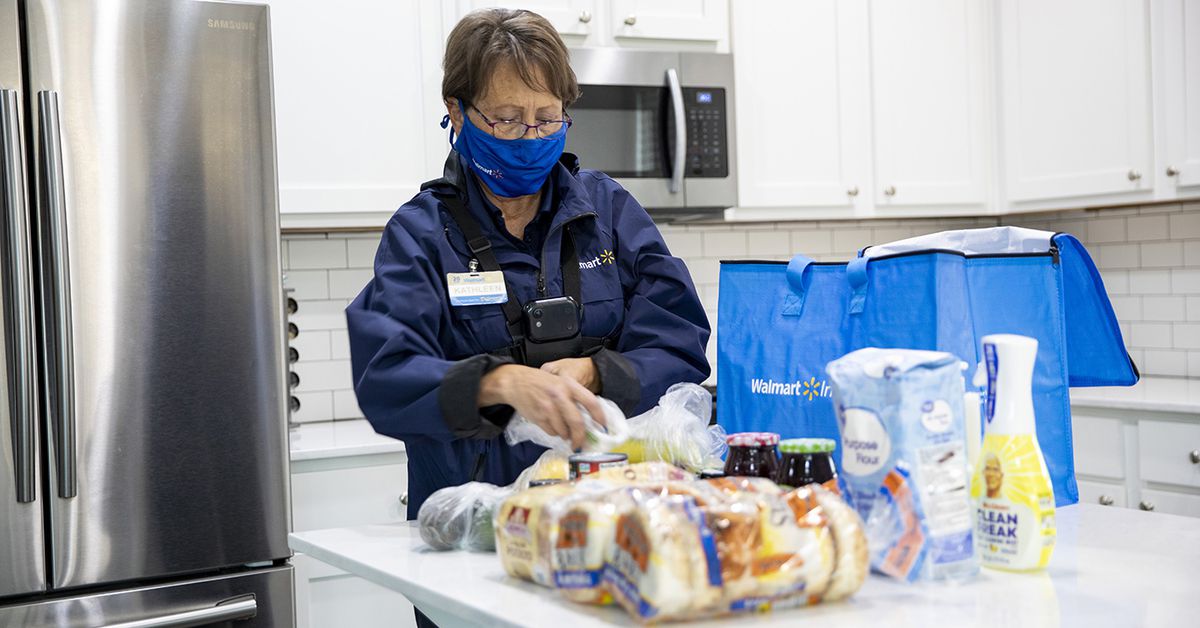Walmart plans to expand InHome, its delivery service that brings groceries (and other items) directly to your fridge or countertop, to 30 million US households by the end of this year. As a part of the expansion, the retail giant says it will hire 3,000 delivery drivers and establish an all-electric fleet of delivery vehicles, thousands of which it has just ordered from the General Motors-backed electric vehicle company BrightDrop.
The InHome delivery service requires you to pay a $19.95 / month subscription fee, along with an optional $49.95 fee for a smart lock (if you don’t already have a garage keypad or a smart lock already) that grants bodycam-wearing Walmart associates access to your home — and your fridge. When the service first launched in 2019, it only serviced one million customers in select locations. The expansion will bring the service to more places across the US, but Walmart doesn’t make it clear where exactly it will be available.
Walmart’s service competes directly with Amazon Key, a similar program launched in 2017 that lets couriers inside your front door to drop off packages. But apparently, some people don’t feel comfortable letting complete strangers into their house, which is why Amazon later decided to add in-garage and in-gate deliveries as alternatives. No matter what service you choose, though, you’ll need to make some extra purchases, including an Amazon Key front door lock and Cloud Cam, a myQ-compatible garage door opener, or a professional installation of the Ring Access Pro for your gate.
Unlike Amazon, however, Walmart won’t be contracting out some of its drivers to third parties (and hopefully won’t subject them to weird standards like how clean their fingernails are or what their breath smells like). Delivery drivers will be employed full-time by the company, allowing them to take advantage of health benefits, paid time off, 401(k) matching, and a $1.50 pay increase from standard store positions. Walmart also plans on filling these roles using some of its existing associates rather than hiring all new employees.
